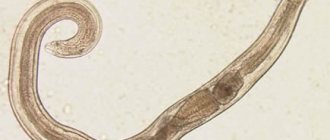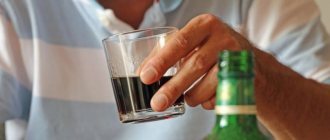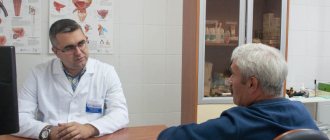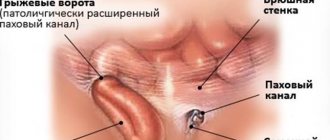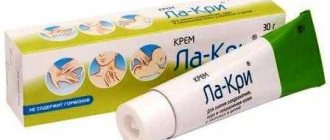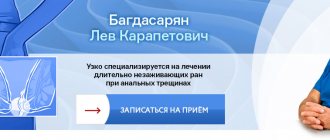November 7, 2018
Rotaviruses, commonly referred to as intestinal infections, are the most common cause of diarrhea in humans and animals. The first line in the risk group is occupied by children - their disease is acute, they are unable to characterize their conditions due to their age, and they are still just learning the basic rules of hygiene, periodically succumbing to the temptation to pet a stray cat, eat strawberries from the garden and not wash their hands.
Once in the body, the “intestinal flu” attacks the cells that line the walls of the gastrointestinal tract and leads to massive damage. The consequence of this is an increase in stool frequency and a watery consistency.
The incidence reaches its peak in the autumn and winter months, when high environmental humidity and decreased immunity of carriers create suitable conditions for the virus to multiply.
In most cases, banal washing of hands and food coming to the table helps prevent food infection. The risk of the disease increases when caring for and other contacts with the “victim” - the patient begins to spread the virus even before the first symptoms appear, and stops several weeks after complete recovery. Even a small number of pathogens can cause the disease.
What is dehydration?
To maintain vital processes, the body needs water and other fluids. This applies to all ages. During the day, the child loses fluid (through sweat, tears, urine and stool) and replaces what is lost with food and drink. Dehydration occurs when a child loses a significant amount of fluid. And if you don't replenish your fluid balance right away, serious complications can occur, including:
- heatstroke
- convulsions
- renal failure
- loss of consciousness
- drop in oxygen levels
Humana Electrolyte
Children do not refuse to drink this banana-flavored drug, which is very important. “Humana Electrolyte” with banana is prescribed for children from three years of age; for newborn babies there is “Humana Electrolyte” with fennel. The product is excellent for treating dehydration for almost any reason: vomiting, diarrhea, increased sweating, intestinal infection, hormonal imbalance, etc. Humana Electrolyte instantly restores the imbalance of electrolytes, replenishes fluid and minerals. One sachet of the drug should be diluted in a glass of water (250 ml). It is advisable to take warm boiled water or tea.
Humana Electrolyte
Dehydration: symptoms
Signs of dehydration depend on the severity of the condition.
Mild to moderate dehydration: symptoms
Here's how mild to moderate dehydration may appear:
- Deterioration in general health.
- The child has dry mucous membranes in the mouth.
- Paleness of the skin.
- Your baby pees less often (toddlers) or you change fewer than six wet diapers a day (toddlers).
- Crying without tears.
- Sunken eyes.
- Sunken fontanel.
- Loose stools if dehydration is caused by diarrhea, and looser stools if dehydration is caused by vomiting and not drinking enough.
- Increased thirst.
If you notice one of the symptoms in your child, consult a doctor immediately. Your doctor will be able to instruct you on what to do to treat your child's dehydration. For example, buy powder at the pharmacy to prepare a solution that restores water and electrolyte balance, also known as a rehydration solution.
Severe dehydration: symptoms
Here's how severe dehydration may present in a child:
- restless behavior
- excessive sleepiness
- sunken eyes
- cold and pale hands and feet
- wrinkled dry skin
- no wet diapers for eight hours (in infants); does not pee for ten hours (toddlers)
If you think your child is severely dehydrated, call an ambulance immediately. The child may require intravenous rehydration, which may require hospitalization.
Treatment
The goal of treating mild to moderate dehydration at home is to rehydrate by replacing lost fluids. But even with home treatment, if you have questions or doubts, be sure to contact your doctor.
Babies
If your baby is breastfed and is not vomiting, continue breastfeeding to restore fluid balance. But if there is vomiting, you should not put the baby to the breast. The doctor will most likely recommend giving the baby a rehydration solution between feedings and will specify the frequency and duration of administration. If your baby is eating formula, don't give him a bottle of formula, just give him rehydration solution until his body can retain fluid. After this, you can resume formula feeding. Remember that water should not be given to children under six months of age and that water is not suitable for treating dehydration in such young children.
Toddlers
Consult your pediatrician. Your doctor may recommend buying baby powder at the pharmacy to prepare a rehydration solution. Follow the dosage indicated in the instructions. Typically, such solutions are given to children regularly in small doses. What not to give to a small child when he is already dehydrated:
- water
- soda
- tea
- fruit juices
- gelatin desserts
- chicken bouillon
These foods do not contain the necessary sugars and salts that a child needs when dehydrated. And if your child is dehydrated due to diarrhea, these foods and drinks may only make the condition worse.
Does a person need 2 liters of water per day?
Disputes among doctors and nutritionists about the amount of fluid per day continue. This topic has become overgrown with a bunch of myths, following which people harm their own health. Experts from the World Health Organization believe that there is no identical daily fluid requirement for all people. And don’t believe that you need to drink 2 liters of water (not counting tea, coffee and liquid from food). The main factors here are the person’s age and weight. So, how much should you drink per day per 1 kg of weight:
- Children up to 10 kg – 4 ml of water per hour.
- Children up to 20 kg – 1000-1500 ml per day.
- Teenagers and adults over 20 kg - 1500 ml for the first 20 kg plus for each subsequent kilogram of weight - 20 ml.
Let's do the math. If a person weighs 50 kg, he needs 1500 ml of fluid plus 20 ml multiplied by 30 subsequent kilograms. Yields 2100 ml per day. If you feel thirsty, be sure to drink! But if you don’t want water, you don’t need to force yourself: the body itself signals when it needs water, so forget about the numbers.
Read also The most effective probiotics for the intestines: top 5 How to choose a probiotic and for what problems it is prescribed.
Causes of dehydration
Dehydration in children often occurs with diarrhea, vomiting, or high fever.
Diarrhea
Occasional loose stools are not a cause for concern. But sometimes diarrhea accompanies viral diseases, such as rotavirus. With diarrhea, the child's body loses important minerals, salts, and water in the stool. This can lead to dehydration. If your baby has loose stools every few hours, contact your doctor as soon as possible. The doctor may ask you not to give your baby solid food for 24 hours and to give him a rehydration solution instead.
Vomit
Vomiting can accompany many diseases, including gastroenteritis (stomach flu), and lead to dehydration. To avoid dehydration, it is important to ensure that your child drinks more fluids. If your child continues to vomit, consult a doctor who can give you the appropriate advice. Important: Do not allow your child to eat solid food for the first 24 hours after vomiting starts. Instead, prepare him a rehydration solution.
Heat
If a child has a temperature above 38 degrees, there is a risk of developing dehydration, since fluid loss occurs faster at a temperature. The higher the temperature, the more dehydrated your child may be. Therefore, it is very important that your child drinks more fluids if he or she has a fever.
Sunburn and heatstroke
Severe sunburn and prolonged exposure to heat can also lead to dehydration. If your child has severe sunburn or heatstroke, seek medical attention immediately. Signs of a severe sunburn:
- blisters
- heat
- chills
- headache
- general malaise
- fainting
- dehydration
Rotavirus infection - “disease of dirty hands” or “intestinal flu”?
In fact, both names fully characterize the disease. Since viruses are mainly transmitted through unwashed children's hands, contaminated toys, food or water.
Once in the body, viruses rush into the small intestine, causing damage and rejection of its villi.
As a result, immature cells of the small intestine appear that do not produce enough digestive enzymes. Therefore, the digestion and absorption of nutrients is impaired. Thus, a cascade of complex processes is launched, leading to the release of water and salts into the intestinal lumen, which is manifested by loose stools and dehydration.
The source of rotavirus infection is a sick or clinically healthy carrier (without signs of disease). Isolation of the virus in feces begins on the second day of illness and then continues for two months even after all symptoms of the disease have disappeared.
How to Avoid Dehydration
If your child is sick, has a fever, has diarrhea, or is vomiting, it is important to make sure they drink plenty of fluids to avoid dehydration. For babies under six months of age, put them to the breast more often; if the baby is bottle-fed, temporarily limit formula feeding and replenish lost fluid with special rehydration solutions. Giving water to such young children is not recommended. If your child has symptoms of mild dehydration, a rehydration solution made from a powder that can be bought over the counter at a pharmacy can help restore the balance of salts and sugars in the body (especially for diarrhea). If you are walking with your child on a hot day, try to stay in the shade as much as possible. Other necessary measures to protect against overheating and sunburn: a wide-brimmed bucket hat, a lightweight long-sleeved cotton T-shirt, and sunscreen. Don't wait until your child starts to feel thirsty; offer him something to drink regularly.
FAQ
- If you notice any of these signs of mild to moderate dehydration in your child, call your doctor immediately:
Deterioration in general health.
- The child has dry mucous membranes in the mouth.
- Pees less often (among toddlers); less than six wet diapers per day (infants)
- Crying without tears.
- Pallor.
- Sunken eyes.
- Sunken fontanel.
- Loose or infrequent stools.
If you notice any of these signs of severe dehydration in your child, call an ambulance:
- Restless behavior.
- Excessive sleepiness.
- Sunken eyes.
- Cold and pale hands and feet.
- Wrinkled dry skin.
- No wet diapers for eight hours (infants); does not pee for ten hours (toddlers).
Follow the dosages indicated in the instructions. If your baby is breastfed, put him to your breast regularly, and give him the solution between feedings. If you usually feed your baby formula, give him only the solution until the signs of dehydration go away. After this, you can offer a bottle of the mixture.
Now you know how dehydration manifests itself, and you can take timely measures if necessary. But the best way to prevent dehydration is to make sure your child drinks enough when sick or when walking on a hot day. Parents of babies are united by the ability to think ahead: for example, what to take with them on a walk for all occasions and for any weather, or how to buy diapers for a month in advance at a discount.
Prevention is everything!
There is a misconception that if rotaviruses are transmitted through contaminated objects, then it is enough to observe the rules of personal hygiene to defeat them. This is partly true, but in the case of young children the rule does not work. Because the virus is highly contagious, it is also less affected by common hand sanitizers and soaps. Only solutions of alcohol, iodine and chlorine are effective against rotaviruses.
It is also generally accepted that it is enough to get sick once to acquire immunity for life. This idea is not entirely correct, since there are several types of rotaviruses. Therefore, there is a risk that each time the body encounters a different type of virus from the same group.
Today, a vaccine against rotaviruses has been developed - the live Rotatek vaccine for oral administration. It protects against the five most common types of rotaviruses in Russia. Immunity after vaccination lasts about five years.
How this article was written
The information presented in this article is based on expert advice published by trusted (medical and government) sources such as the American Pediatrics Association and the American College of Obstetricians and Gynecologists. A complete list of links to sources used to write this article can be found at the end of the article. The information on this page is not a substitute for professional medical advice. Always consult your doctor for diagnosis and treatment.
Diagnostics
To isolate rotavirus and its serotype, bacteriological, microscopic, serological examination of feces, vomit and blood serum is prescribed. The diagnosis is confirmed by the presence of viral particles in the biomaterial being studied.
A general urine and blood test and coprogram are of auxiliary importance in diagnosing the disease. In doubtful cases, sigmoidoscopy (endoscopic examination of the rectum and sigmoid colon) and biopsy of the colon mucosa are prescribed. To obtain information about changes in the ENT organs, rhinoscopy, otoscopy, and pharyngoscopy are used.
During diagnosis, it is necessary to exclude diseases with similar symptoms:
- dysentery (acute intestinal infection caused by bacteria of the genus Shigella),
- salmonellosis (damage to the digestive system by bacteria of the genus Salmonella),
- cholera (intestinal damage by Vibrio cholerae),
- food poisoning,
- enteroviruses of other etiologies,
- coli infection (damage to the gastrointestinal tract with E. coli),
- Giardiasis (caused by intestinal lamblia).
